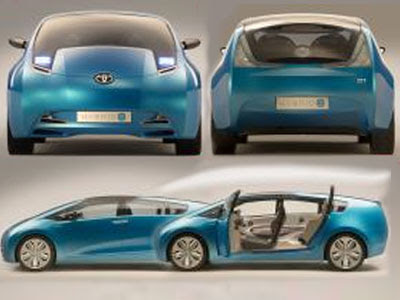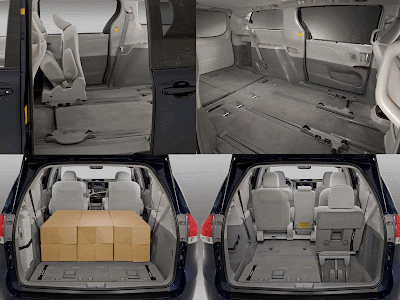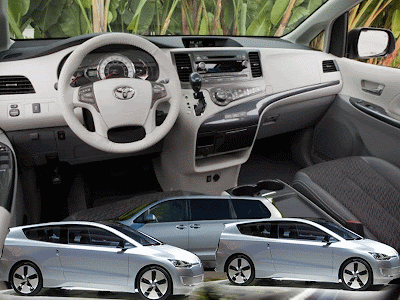Saturday, March 5, 2011
Friday, March 4, 2011
Thursday, March 3, 2011
2010 BMW Z4 GT3 Sports Cars
2010 BMW Sports Cars Z4 GT3
The German company BMW has been considered as one of the top manufacturers ever since it was first introduced in 1916, they have been an expert when it comes to creating new and innovative vehicles to cater to the market. GT3 BMW Z4, which is officially launched and completed the first test drive in early March, already enjoying great popularity among customers of BMW Motorsport. The first cars delivered to private teams,BMW will prepare them for use in national and international championships.
2010 BMW Sports Cars Z4 GT3
BMW Z4 production model is impressive: with a long hood, wheel arches are lit, the long wheelbase and narrow projection, this car offers a unique look. BMW Motorsport engineers two passengers provide a good basis to develop close to GT3 racing car production.
“Information about the 2010 BMW Sports Cars Z4 GT3 very positive,” said BMW Motorsport Director Mario Theissen. ‘Round these sports cars in the range of our products, and provides drivers and teams a chance to compete at the championships in accordance with the GT3 regulations – such as the FIA GT3 European Championship, the International GT Open or Masters ADAC GT – and 24-hour endurance races." In addition, the BMW M3 GT2, the BMW 320si WTCC, which complies with Super2000 regulations, and the close-to-production BMW M3 GT4 are also available to customer teams from all over the world at BMW Motorsport Distribution
Labels:
BMW Cars
2010 BMW Sports Cars Z4 GT3

2010 BMW Sports Cars Z4 GT3
The largest difference between production and racing car can be found under the bonnet: while the production version of the BMW Z4 is driven by a six-cylinder engine, the GT3 car is powered by a 4.0-litre eight-cylinder engine similar to the unit used in the BMW M3 GT2. This powerful heart produces over 480 bhp. Its excellent performance characteristics and good torque curve make the base engine from the production version of the BMW M3 predestined for use in motorsport.
Front and rear wings, bonnet, roof, fender and many other components are made of carbon fibre reinforced plastics (CFRP). Using this lightweight, torsion-resistant material contributed significantly to reducing the weight of the 2010 BMW Sports Cars Z4 GT3 to 1,200 kilograms. As with all carsin the BMW customer racing range, the emphasis was also put on cost-efficiency when developing the 2010 BMW Sports Cars Z4 GT3. As a result, the car offers an excellent cost / quality ratio and gives the team a chance to participate personally in the affordable sports car at the highest level.

Labels:
BMW Cars
2011 BMW SPORTS CARS
The Tunisian Oussama Khalfi designer, has created another concept car with a wider front act to place a powerful system. This is the new "Flash BMW, the car's sporty character and design, can be either V8, V10 or V12 depending on the request by the pilot.

BMW Sport Cars BMW Flash Concept By Khalfi Oussama, the interior design is stylish and class and the wheel drive design is 100% sport style, the inspiration behind the flash is the bmw M6. The sporty exterior of the concept vehicle is equally complemented by the rich andlustrous interior that promises to commute the rider in utmost comfort.

Labels:
2012 BMW
Wednesday, March 2, 2011
TOYOTA ELECTRIC PM CONCEPT CARS

Toyota PM Concept Car
Toyota PM is highly maneuverable thanks to its castor like wheels capable of rotating through 180 degrees. The front wheels are also notable because of their hub-less design.
The futuristic Toyota PM concept from 2003 is a personal transport concept.
The PM's cockpit opens by touching one of the unusual stalk mounted headlights, this then glows green to announce the impending opening of the glass canopy.
Another interesting feature Toyota has built into the PM is its adjustable ride height and attitude. As the PM's speed increases it lowers to the ground to increase stability and improve aerodynamics.
Inside the PM information regarding vehicle performance and the location of other PM's is relayed to the single occupant by a floating virtual display.
Power for the concept comes from an electric motor
Labels:
Toyota Cars
Toyota FT-86 Concept Reviews

The concept car Toyota FT-86 (that’s hachi roku in Japanese) goes back to the fundamental qualities of the classic sports car with its rear-wheel drive configuration, compact dimensions, low centre of gravity and lightweight construction. Under the bonnet there is a 2.0-litre boxer engine that is strong on both performance and environmental quality
Great to own and fun-to-drive: those are the guiding principles behind a new Toyota sports car concept that will break cover for the first time at the Tokyo motor show later this month.
The show car’s bodywork is finished in Flash Red, an eye-catching shade that contains a hint of blue. Inside, the cabin design further expresses the car’s classic sporting qualities with many of the structural elements left uncovered.
Labels:
Toyota 2011
2011 Toyota Hybrid X concept car

Toyota Hybrid X concept car
Toyota will provide a vision for the future of hybrid cars when it unveils the Hybrid X concept car at this year’s Australian International Motor Show.
Hybrid X proposes a new design language for Toyota’s hybrid models while also acting as a technology showcase for future hybrid cars.
Created and developed by Toyota’s European styling centre ED² in the south of France, Hybrid X is a four-door, four-seat concept that is spacious and comfortable.It is a step closer to Toyota’s vision of the ultimate environmental driving technology.
Its design will influence the entire Toyota brand and its hybrid models in the future.A vision for future environmentally friendly motoring, the appearance of Hybrid X comes soon after Toyota announced it would build a hybrid Camry in Australia from 2010.
Hybrid X is the latest concept to demonstrate Toyota’s world-leading Hybrid Synergy Drive® technology, which is at the core of the company’s strategy to develop the ultimate eco-car.
The show car fits clearly within Toyota’s environmental strategy of offering sustainable mobility for modern families.
It has the dimensions of a conventional family car with an overall length of 4,500mm and wheelbase of 2,800mm. The width is 1,850mm and height 1,440mm.
It proposes unconventional creative solutions that will potentially become the signature points of a specific hybrid identity.
Hybrid X features a futuristic body shape that is dominated by two ‘U’ shapes created by the upper glass frame area and the unconventional A and C pillars.
Viewed from above, this gives the impression of a large X – hence the name of the concept, Hybrid X.
Dynamic hints of driving performance are provided by the customised 20-inch alloy wheels with ultra-low profile 225/40 R20 tyres.
LED headlamps are integrated into the dashboard and are now part of the interior of the car and can communicate information such as safety distances, acceleration and braking to other drivers and pedestrians.
The driver can set the ambience within the car, controlling sight, sound, touch and even smell.
A drive-by-wire steering pad features a central screen to relay information to the driver about the energy flow path, fuel consumption and gear position.
Space-saving seats are formed using injected foam techniques, which create comfort while reducing weight.
The two independent rear seats can swivel by 12 degrees to allow passengers to enjoy the scenery or conversation
Hybrid X proposes a new design language for Toyota’s hybrid models while also acting as a technology showcase for future hybrid cars.
Created and developed by Toyota’s European styling centre ED² in the south of France, Hybrid X is a four-door, four-seat concept that is spacious and comfortable.It is a step closer to Toyota’s vision of the ultimate environmental driving technology.
Its design will influence the entire Toyota brand and its hybrid models in the future.A vision for future environmentally friendly motoring, the appearance of Hybrid X comes soon after Toyota announced it would build a hybrid Camry in Australia from 2010.
Hybrid X is the latest concept to demonstrate Toyota’s world-leading Hybrid Synergy Drive® technology, which is at the core of the company’s strategy to develop the ultimate eco-car.

The show car fits clearly within Toyota’s environmental strategy of offering sustainable mobility for modern families.
It has the dimensions of a conventional family car with an overall length of 4,500mm and wheelbase of 2,800mm. The width is 1,850mm and height 1,440mm.
It proposes unconventional creative solutions that will potentially become the signature points of a specific hybrid identity.
Hybrid X features a futuristic body shape that is dominated by two ‘U’ shapes created by the upper glass frame area and the unconventional A and C pillars.
Viewed from above, this gives the impression of a large X – hence the name of the concept, Hybrid X.
Dynamic hints of driving performance are provided by the customised 20-inch alloy wheels with ultra-low profile 225/40 R20 tyres.
LED headlamps are integrated into the dashboard and are now part of the interior of the car and can communicate information such as safety distances, acceleration and braking to other drivers and pedestrians.
The driver can set the ambience within the car, controlling sight, sound, touch and even smell.
A drive-by-wire steering pad features a central screen to relay information to the driver about the energy flow path, fuel consumption and gear position.
Space-saving seats are formed using injected foam techniques, which create comfort while reducing weight.
The two independent rear seats can swivel by 12 degrees to allow passengers to enjoy the scenery or conversation
Labels:
Toyota 2011
TOYOTA CARS THIRD GENERATION SIENNA MINIVAN REVIEWS

Toyota is the first carmaker in North America to be offering this innovation. The Auto Access Seat has a seat-mounted ingress/egress switch and a wireless remote control that allows for easy and flexible seat operation. The seat is able to rotate 90 degrees and can be lowered to within 19 inches of the ground to further facilitate easier passenger transfers at the exact height required. The Toyota Sienna is well known as a transportation solution for moving people and cargo comfortably and efficiently. The third-generation Toyota Sienna will look and drive more like a sedan, conform to new ideas about personal comfort, easily accommodate cargo, and handle big loads. The Toyota Sienna will come in five conveniently configured grades, all sharing a distinctly new visual direction and features. Toyota unveiled the all-new, third-generation Toyota Sienna minivan at a media conference at the 2009 Los Angeles Auto show.

Third-Generation Toyota Sienna Minivan
The 2011 Sienna has been reinvented to handle these needs as it shifts to a more expressive and dynamic vehicle with a stronger profile, high shoulder character and responsive handling. The 2011 Toyota Sienna may be the Japanese automaker's third-generation minivan, but Toyota emphasizes that the new Sienna is becoming more carlike than ever. The Sienna gets smart updates to its drivetrains and to its interior package for 2011-but not to its seating configurations, which still lag the class-leading Dodge Grand Caravan and Nissan Quest in flexibility. The Sienna is offered in a broad model range, and continues to be the only minivan with an all-wheel-drive option.

Third-Generation Toyota Sienna Minivan
The third-generation Sienna combines a contemporary style with features not previously seen in a minivan, and a fun-to-drive spirit that will surprise many, along with the flexibility, spaciousness and features that have defined the segment. The Sienna was designed by Toyota's Calty Design Research and developed at Toyota Technical Center in Ann Arbor, Mich., with assembly being accomplished at Toyota Motor Manufacturing, Indiana.

Third-Generation Toyota Sienna Minivan
A Toyota first rear-seat Dual View Entertainment Center is another innovative option. The system uses two displays side-by-side to create a seamless 16.4-inch widescreen image from a single source. When two separate entertainment options are called for, the system can split the screen into two individual screens, each with input from separate sources. Used as a single screen, it can be easily seen from the third row, and it can be operated from any seat via remote control. Used as two screens, the system can accommodate the preferences of two separate passengers who might want to play a video game or watch a second DVD simultaneously via auxiliary inputs.

Third-Generation Toyota Sienna Minivan
A choice of two responsive DOHC engines will be available: a 3.5-liter V6 or 2.7-liter four-cylinder engine. By adding the alternative of a four-cylinder engine, the 2011 Toyota Sienna is the first minivan in years to stray from the V-6-engine-only formula. Both engines offer the latest in efficient, lightweight technology, including Dual Variable Valve Timing with intelligence (VVT-i), roller rocker arms and an Acoustically Controlled Induction System (ACIS) that changes the length of the air-intake pipe to supply more torque on demand.

Third-Generation Toyota Sienna Minivan
The 3.5-liter V6 makes 266 horsepower at 6,200 rpm, with expected EPA-estimated mileage ratings of 18 mpg city/24 mpg highway (16 mpg city/22 mpg highway on AWD models). It also has a 3,500-pound tow capacity. With 187 horsepower at 5,800 rpm, the 2.7-liter four-cylinder engine produces responsive power that exceeds some competitors V6 performance, while delivering expected EPA-estimated fuel efficiency ratings of 19 mpg city and 26 mpg on the highway. Given its upgraded engineering, every Toyota Sienna will ride well and track cleanly through corners, but none more so than the newest addition to the line: the sporty SE.

Third-Generation Toyota Sienna Minivan
The Limited is designed for customers who want all the features with more luxury. The standard equipment list is extensive, including new second-row Lounge Seating and a power 60/40 Split & Stow third-row seat, front and rear parking sonar, dual moonroof, Smart Key, and Safety Connect™. Select options include those available on the XLE plus HID auto high-beam auto-high beam headlamps, rain-sensing wipers, and Pre-Collision System (PCS) with Dynamic Radar Cruise Control.

Third-Generation Toyota Sienna Minivan
The Toyota Sienna will come in five grades: Sienna grade, LE, SE, XLE and Limited. All-wheel-drive is available with the V6 on LE, XLE and Limited models. The all-new 2011 Toyota Sienna will begin arriving at Toyota dealerships in February 2010.
Labels:
Toyota 2011
THIRD GERERATION TOYOTA SIENNA MINIVAN CARS
Toyota is the first carmaker in North America to be offering this innovation. The Auto Access Seat has a seat-mounted ingress/egress switch and a wireless remote control that allows for easy and flexible seat operation. The seat is able to rotate 90 degrees and can be lowered to within 19 inches of the ground to further facilitate easier passenger transfers at the exact height required. The Toyota Sienna is well known as a transportation solution for moving people and cargo comfortably and efficiently. The third-generation Toyota Sienna will look and drive more like a sedan, conform to new ideas about personal comfort, easily accommodate cargo, and handle big loads. The Toyota Sienna will come in five conveniently configured grades, all sharing a distinctly new visual direction and features. Toyota unveiled the all-new, third-generation Toyota Sienna minivan at a media conference at the 2009 Los Angeles Auto show.
2011 Third-generation Toyota Sienna Minivan
The 2011 Sienna has been reinvented to handle these needs as it shifts to a more expressive and dynamic vehicle with a stronger profile, high shoulder character and responsive handling. The 2011 Toyota Sienna may be the Japanese automaker's third-generation minivan, but Toyota emphasizes that the new Sienna is becoming more carlike than ever. The Sienna gets smart updates to its drivetrains and to its interior package for 2011-but not to its seating configurations, which still lag the class-leading Dodge Grand Caravan and Nissan Quest in flexibility. The Sienna is offered in a broad model range, and continues to be the only minivan with an all-wheel-drive option.
2011 Third-generation Toyota Sienna Minivan
The third-generation Sienna combines a contemporary style with features not previously seen in a minivan, and a fun-to-drive spirit that will surprise many, along with the flexibility, spaciousness and features that have defined the segment. The Sienna was designed by Toyota's Calty Design Research and developed at Toyota Technical Center in Ann Arbor, Mich., with assembly being accomplished at Toyota Motor Manufacturing, Indiana.
2011 Third-generation Toyota Sienna Minivan
A Toyota first rear-seat Dual View Entertainment Center is another innovative option. The system uses two displays side-by-side to create a seamless 16.4-inch widescreen image from a single source. When two separate entertainment options are called for, the system can split the screen into two individual screens, each with input from separate sources. Used as a single screen, it can be easily seen from the third row, and it can be operated from any seat via remote control. Used as two screens, the system can accommodate the preferences of two separate passengers who might want to play a video game or watch a second DVD simultaneously via auxiliary inputs.
Labels:
Toyota 2011
Subscribe to:
Comments (Atom)
















